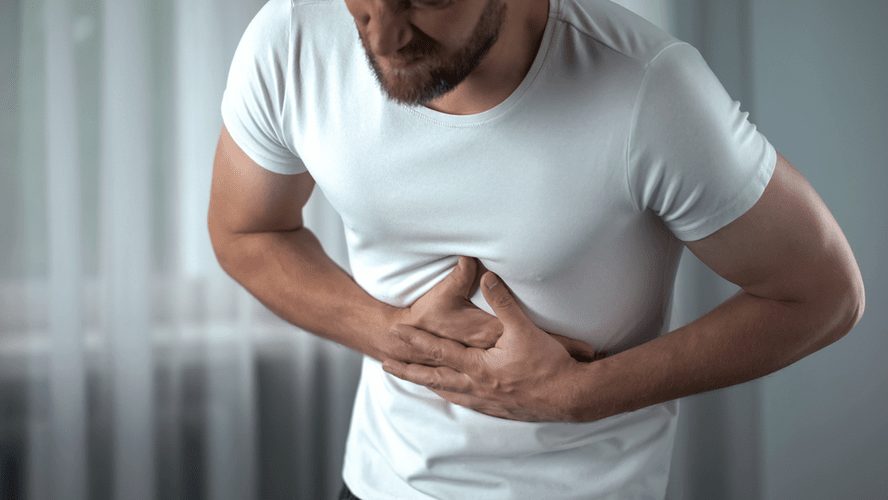This convention allows a systematic study of the condition, and of whether group members benefit from a specific intervention. Some effects of drug abuse and addiction include changes in appetite, mood, and sleep patterns. More serious health issues such as cognitive decline, major organ damage, overdose, and death are also risks. Addiction to drugs while pregnant can lead to serious outcomes for both mother and child. Animal studies also corroborate the presence of neuroadaptations in mesocortical DA synapses in the PFC as well as in corticofugal glutamate synapses in the NAc in rodents withdrawn from chronic cocaine exposure (173). The former appears to involve a partial decoupling between Giα and D2R (40), and may contribute to an exaggerated reactivity towards drugs and drug-predictive cues and to a blunted response towards natural rewards.
- • the prefrontal cortex, which is the seat of such executive functions as judgment, decision-making, impulse control; it gradually weakens in response to overactivation of the reward circuits by drugs of abuse.
- For example, increases in synaptic strength following repeated cocaine exposure trigger homeostatic changes in membrane excitability in MSNs in the NAc, which appear to contribute to incubation of cocaine craving (349).
- Only two proof of principle studies investigated PFC targeting tDCS for reducing cocaine (18, 80) and while results were positive, the sample sizes were too small (11 and 17 subjects, respectively) and replication is needed.
- Dr. Ashish Bhatt, MD explains how addiction affects the brain, and how different substances can alter the brain’s chemistry.
Depression & Substance Use Disorder
Figure 2.6 shows the major neurotransmitter systems involved in the binge/intoxication stage of addiction. In this stage, the neurons in the basal ganglia contribute to the rewarding effects of addictive substances and to incentive salience through the release of dopamine and the brain’s natural opioids. TMS is a noninvasive technique with the potential to reduce the long-term neurophysiological (and behavioral) changes induced by chronic drug use. Although it is premature to judge its effectiveness, initial results are encouraging. For example, in one pilot study (open label), high-frequency (excitatory) TMS delivered to the left DLPFC of patients with cocaine use disorder led to significant reductions in cocaine use and craving (322). Other preliminary results also support the idea that TMS could help patients control their cravings (263, 267) and cocaine consumption (35).
Tobacco FAQs

Besides, SH was responsible for consolidating the review, formatting Supplementary Tables S1–S5, and the formatting of the review. HT drafted the nicotine literature review, the “Future Directions” section, and Figure 1, as well as helped format Supplementary Tables S1–S5. JF drafted the opioid and the co-use literature review and the “Introduction” section. The most effective approach to treating depression is a program that integrates mental health and recovery services at the same facility, with a staff of professionals who are cross trained in both fields.

Biological Factors Contributing to Population-based Differences in Substance Misuse and Substance Use Disorders
![]()
Depressive episodes are a key component of bipolar 1 and bipolar 2 diagnoses, with hypomanic and major depressive episodes characterizing a bipolar 2 diagnosis specifically. Many individuals with bipolar disorder experience episodes of major depression that last for weeks or months, with less frequent cycles of energetic activity and elevated mood.5 It can be difficult to diagnose an individual with bipolar disorder without tracking these mood changes over an extended http://zdoroviedetey.ru/node/1330 period of time. A mood disorder like depression is not the result of bereavement or a personal setback, such as the death of a loved one or loss of a job, but a chronic, progressive illness that may get worse without treatment. Although the user may rely on substances used to relieve symptoms of depression, chemical intoxication can actually make depressive episodes more severe, increasing the frequency and intensity of negative thoughts and self-destructive behavior.
Effects of Drug Addiction
We then describe evidence-based treatments you can recommend to patients to help the brain, and the patient as a whole, to recover. Cannabinoids such as delta-9-tetrahydrocannabinol (THC), the primary psychoactive component of marijuana, target the brain’s internal or endogenous cannabinoid system. This system also contributes to reward by affecting the function of dopamine neurons and the release of dopamine in the nucleus accumbens.
To promote patient access to treatments, scientists needed to argue that there is a biological basis beneath the challenging behaviors of individuals suffering from addiction. This argument was particularly targeted to the public, policymakers and health care professionals, many of whom held that since addiction was a misery people brought upon themselves, it fell beyond the scope of medicine, and was neither amenable to treatment, nor warranted the use of taxpayer money. In the VTA, spontaneous firing of DA neurons sets tonic DA levels, which stimulate mainly D2R (also D3R, which have high affinity for DA) in NAc, upon which phasic DA firing can be superimposed resulting in higher DA levels that additionally stimulate D1R (262).
- The critical role of alternative reinforcers was elegantly brought into modern neuroscience by Ahmed et al., who showed that rats extensively trained to self-administer cocaine would readily forego the drug if offered a sweet solution as an alternative [103].
- Together, medication and behavioral health treatments can facilitate functional brain recovery.
- In spite of this progress, our understanding of how substance use affects the brain and behavior is far from complete.
- As a result, marijuana smokers do not typically smoke as frequently as tobacco smokers.40 Typical patterns of use are described below for the major classes of addictive substances.
- EEGs are typically used to help individuals who have suffered traumatic brain injuries and can be helpful to individuals with obsessive compulsive disorder and other brain disorders.
While nicotine can cause heart disease, caffeine is generally safe for adults as long as you don’t drink too much of it. The reality is much more complicated, so it’s important to find https://greenword.ru/2009/07/what-really-kills-americans.html ways to reduce your risk of harm from tobacco and nicotine as you try to quit smoking. People struggling with depression often feel isolated, profoundly lonely, and powerless.
- Despite the fact that users are interacting with each other on these platforms, many of the these types of interactions don’t necessarily translate well to the real world.
- In closing, brain alterations underlying addiction not only drive the addiction process itself but also make it difficult for many people with AUD to change their drinking behavior, particularly if they are struggling to cope with the considerable discomfort of acute or protracted withdrawal.
- Using optical imaging in transgenic mice, we showed that in the dorsal striatum of naive mice, acute cocaine led to fast [Ca2+] increase in D1R-MSNs and to progressive [Ca2+] decreases in D2R-MSNs, consistent with DA stimulating D1R-MSNs and inhibiting D2R-MSNs (213).
- The transition from flexible, goal-directed to reflexive, compulsive behaviors is also influenced by interoceptive and exteroceptive inputs.
- Also, the person will often need to take larger amounts of the drug to produce the familiar high—an effect known as tolerance.
As a result, the person’s ability to experience pleasure from naturally rewarding (i.e., reinforcing) activities is also reduced. This three-pound mass of gray and white matter sits at the center of all human activity—you need it to drive a car, to enjoy a meal, to breathe, to create an artistic masterpiece, and to enjoy everyday activities. The brain regulates your body’s basic functions, enables you to interpret https://hometi.ru/the-construction-of-the-roof/vliyanie-otdelnyh-mer-antialkogolnoi-politiki-vremennyh.html and respond to everything you experience, and shapes your behavior. Results from NIDA-funded research have shown that prevention programs involving families, schools, communities, and the media are effective for preventing or reducing drug use and addiction. Although personal events and cultural factors affect drug use trends, when young people view drug use as harmful, they tend to decrease their drug taking.
- It controls how you interpret and respond to life experiences and the ways you behave as a result of undergoing those experiences.
- We then describe evidence-based treatments you can recommend to patients to help the brain, and the patient as a whole, to recover.
- Throughout substance abuse treatment, core interventions such as individual therapy, group therapy, 12-Step programming, and family or marriage counseling provide a stable support network and a foundation for psychological healing.
- The endogenous cannabinoid system (ECS) modulates other neurotransmitter systems including GABA, glutamate, and DA in key areas along the mesolimbic circuitry (209, 348).
Getting yourself or your addicted loved one the right support is likely to be what saves not only the lives of the person struggling with addiction but also the hundreds that person influences. The involvement of these reward and habit neurocircuits helps explain the intense desire for the substance (craving) and the compulsive substance seeking that occurs when actively or previously addicted individuals are exposed to alcohol and/or drug cues in their surroundings. It is not trivial to delineate the exact category of harmful substance use for which a label such as addiction is warranted (See Box 1). Throughout clinical medicine, diagnostic cut-offs are set by consensus, commonly based on an evolving understanding of thresholds above which people tend to benefit from available interventions.
